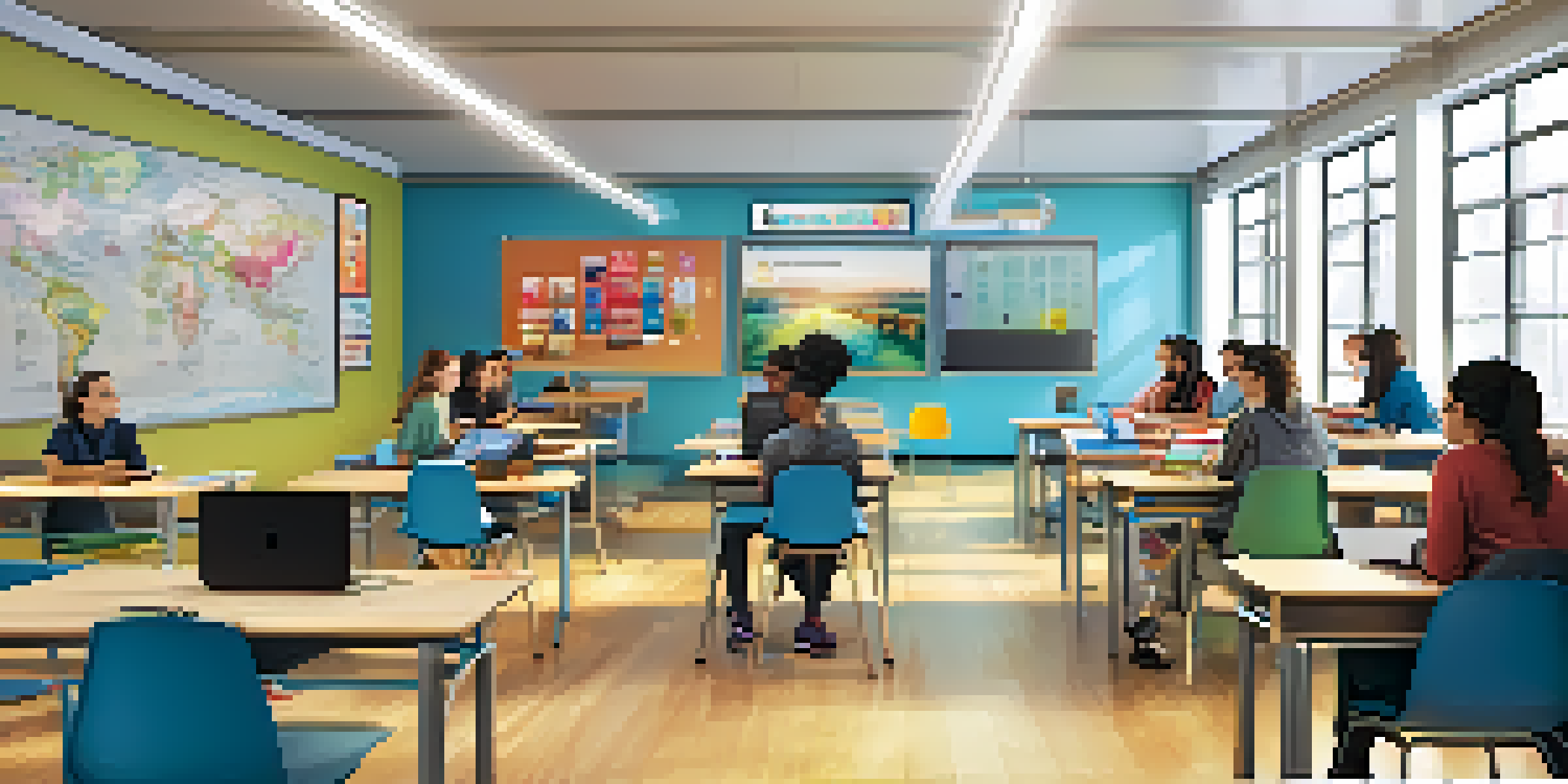The Role of Accessibility Standards in Learning Management Systems

What Are Accessibility Standards in Education?
Accessibility standards are guidelines that ensure educational materials and environments are usable by everyone, including individuals with disabilities. These standards, such as the Web Content Accessibility Guidelines (WCAG), provide a framework to create inclusive digital content. They cover various aspects, from visual elements to navigational features, making it easier for all learners to engage with the material.
Accessibility is not a feature, it's a social trend.
Think of accessibility standards like a ramp for a building. Just as a ramp allows those who use wheelchairs to enter, accessibility standards ensure that learners with different needs can access education effectively. Without these standards, many learners might find themselves locked out of valuable resources and opportunities.
As technology evolves, the importance of these standards becomes even more pronounced, especially in Learning Management Systems (LMS). By adhering to these guidelines, educators and institutions can foster an inclusive environment that empowers every student to thrive.
The Importance of Accessibility in Learning Management Systems
Accessibility in LMS is vital for creating an equitable learning experience. By ensuring that all users can navigate, access, and interact with the platform, educational institutions promote inclusivity. This not only aids learners with disabilities but also enhances the experience for everyone, making resources more straightforward and intuitive.

Imagine trying to read a textbook where the text is too small or the contrast is poor—frustrating, right? In the same way, an inaccessible LMS can hinder a student's ability to learn effectively. By implementing accessibility standards, institutions can avoid these pitfalls and foster an engaging learning environment.
Accessibility Standards Ensure Inclusivity
Accessibility standards like WCAG provide guidelines that help make educational materials usable for all learners, including those with disabilities.
Moreover, accessible LMS platforms can increase overall student retention and satisfaction. When learners feel supported and included, they are more likely to engage with the content and succeed academically.
Key Accessibility Standards for Learning Management Systems
Several critical standards guide the development of accessible LMS platforms. The WCAG provides a comprehensive checklist for web accessibility, including guidelines for text alternatives, adaptable layouts, and keyboard navigation. Familiarity with these standards is essential for developers and educators alike.
Inclusion is not a matter of political correctness. It is the key to growth.
For instance, ensuring that images have descriptive alt text allows visually impaired students to understand visual content. Similarly, having clear headings and labels helps all users navigate the system more easily, regardless of their abilities. These small adjustments can significantly enhance usability.
In addition to WCAG, other standards like Section 508 and the Americans with Disabilities Act (ADA) also play a role in shaping accessibility practices. Understanding and implementing these standards is crucial for creating a robust LMS that caters to diverse learners.
How to Assess Accessibility in Your LMS
Assessing the accessibility of an LMS involves a combination of automated tools and manual testing. Tools like WAVE or Axe can help identify common accessibility issues, but they should not be the sole method of evaluation. Manual testing, including user feedback from individuals with disabilities, is essential for a comprehensive assessment.
Picture trying to fix a car using only a diagnostic tool; while it can identify some issues, it won’t catch everything. In the same way, relying solely on automated tools can lead to missed opportunities for improvement. Engaging real users in the testing process can uncover unique challenges they face.
LMS Accessibility Boosts Student Success
An accessible Learning Management System not only supports students with disabilities but also enhances the overall learning experience for everyone.
Regular assessments are crucial, especially as content and technology evolve. Institutions should establish a routine review process to ensure ongoing compliance with accessibility standards, creating a more inclusive learning environment for all.
Best Practices for Creating Accessible Learning Content
Creating accessible content starts with mindful design choices. For instance, using high-contrast colors for text and backgrounds improves readability for everyone, particularly those with visual impairments. Additionally, using clear and concise language can help all learners, regardless of their proficiency level.
Consider the analogy of building a bridge; if the materials are not strong enough, the bridge won't hold. Similarly, if educational content isn't designed with accessibility in mind, it risks alienating a portion of the learner population. By prioritizing accessibility, you ensure that your content can support all learners effectively.
Furthermore, providing multiple formats for content—such as video captions, transcripts, and audio descriptions—accommodates diverse learning preferences. These best practices not only comply with standards but also enrich the learning experience for every student.
The Role of Training in Accessibility Compliance
Training is a fundamental aspect of ensuring accessibility compliance in LMS development and content creation. Educators and content creators need to be aware of accessibility standards and best practices to implement them effectively. Regular training sessions can help keep everyone updated on the latest guidelines and tools.
Think of this training as a map for a road trip; without a clear direction, it's easy to get lost along the way. By equipping staff with the knowledge and skills necessary for accessibility, educational institutions can navigate the complexities of compliance more effectively.
Training is Key for Accessibility Compliance
Regular training for educators and content creators is essential to effectively implement accessibility standards and foster an inclusive learning environment.
Additionally, fostering a culture of inclusivity through training encourages staff to prioritize accessibility in their work. This collective commitment can lead to more innovative and effective solutions that benefit all learners.
The Future of Accessibility in Learning Management Systems
As technology continues to advance, the future of accessibility in LMS holds great promise. Emerging technologies, like artificial intelligence and machine learning, have the potential to enhance accessibility features in real-time. For example, AI can help generate captions for videos or provide instant translations, making learning more accessible than ever.
Imagine a classroom where every student's needs are met seamlessly through technology—this is becoming a reality. As educational institutions embrace these innovations, they can create more personalized and inclusive experiences for learners of all abilities.

However, it's essential to balance innovation with the foundational principles of accessibility. As we move forward, ongoing commitment to accessibility standards will ensure that all learners can benefit from these advancements, paving the way for a truly inclusive educational landscape.